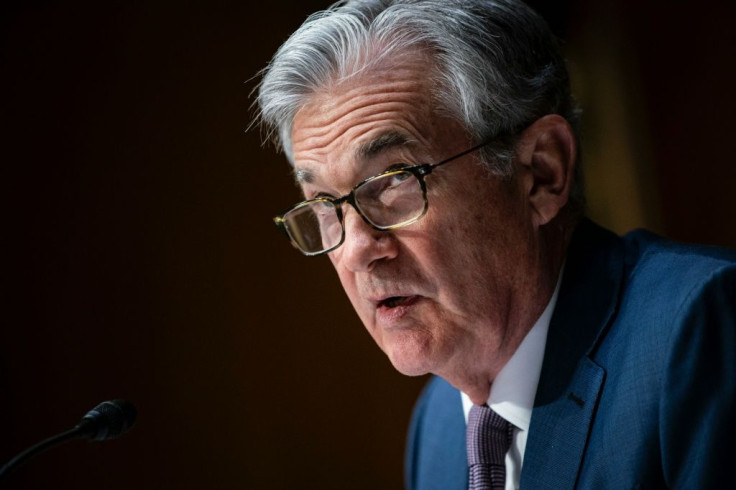Current US Debt Level 'Very Sustainable': Fed's Powell
US government borrowing is on an "unsustainable path" but the current debt level is "very sustainable" and the government will have no problem servicing it, Federal Reserve Chair Jerome Powell said Wednesday.
Powell acknowledged the debt -- currently $22.96 trillion -- "is growing meaningfully faster than the economy and that's by definition unsustainable over time."
However, "The current level of the debt is very sustainable and there's no question of our ability to service and issue that debt for the foreseeable future," Powell said in an appearance before the Economic Club of Washington.
Public debt has accelerated over the past year as the government rolled out multiple massive aid programs to help companies and families deal with the fallout from the Covid-19 pandemic crisis.
But after the Fed slashed lending rates to zero in March 2020, the cost to service the debt actually declined $41 billion in the first six months of the current fiscal year.
Powell downplayed concerns the debt could fuel inflation and indicated there should be no hurry to tackle the problem.
"That is something that is best done in very good times, when the economy is at full employment and when taxes are rolling in," he said.
"This is not the time to prioritize that concern, but it is nonetheless an important concern that I believe we will ultimately have to return to again when the economy is strong."

Powell has repeatedly tried to stave off investor fears about rising inflation amid the accelearting economic recovery, saying that while prices are expected to bounce back sharply, the effect will be temporary.
He again stressed that central bankers are waiting to see inflation hold "moderately" above the Fed's 2.0 percent inflation target for some time, and for employment to fully recover before they consider raising the benchmark lending rate.
"We are really focused on the progress of the economy toward those goals, and not on a particular timeframe" to check the boxes, Powell said.
Consumer and producer price indexes for March, reflecting the first full year of the pandemic impact, showed a bounce in inflation, with CPI jumping 2.6 percent.
But the Fed chief noted that for a decade inflation has remained below the target level, which is why policymakers want to see it move higher, which would allow them to raise interest rates.
And while hiring has accelerated as businesses reopen, there are about 10 million jobs that have not returned.
"I think we are going into a period of faster growth and higher job creation and that's a good thing," Powell said, however "there are still risks" including the possibility of another spike in Covid cases.
© Copyright AFP {{Year}}. All rights reserved.





















